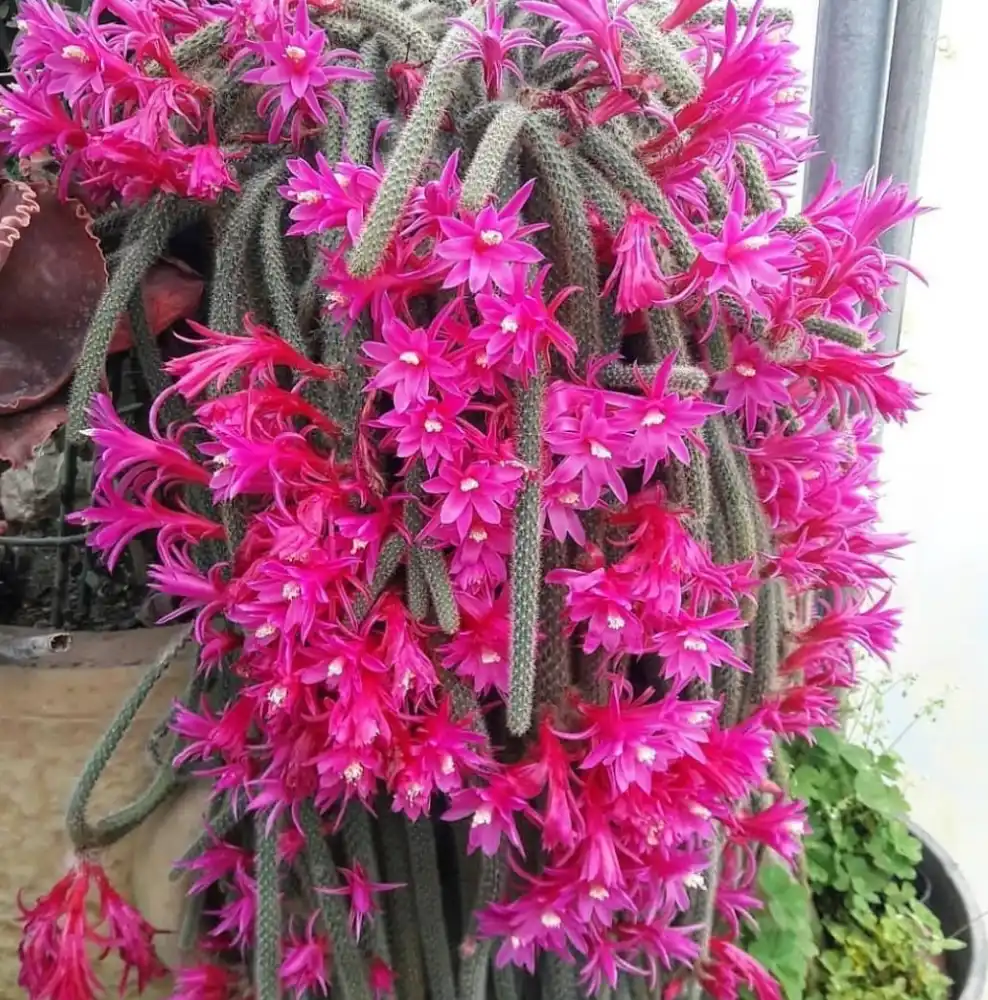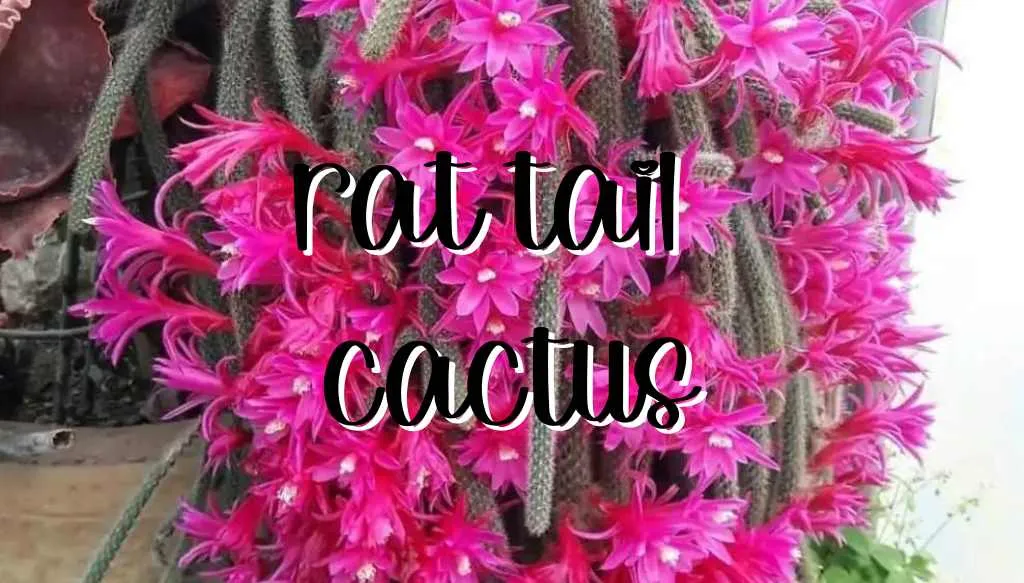In this article, we will explore the fascinating world of the Rat Tail Cactus, also known as Aporocactus flagelliformis. If you’re already a succulent enthusiast, you’ll be intrigued by the unique characteristics of this succulent. So, let’s dive into the details and discover what makes the Rat Tail Cactus so special.
Dig in!
Appearance and Growth
The Rat Tail Cactus is a trailing or cascading succulent that features long, slender, and cylindrical stems. These stems resemble the tail of a rat, hence the common name. The stems are typically green or reddish-brown and have small, soft spines along their surface. Unlike many other cacti, the Rat Tail Cactus lacks prominent leaves, and photosynthesis primarily occurs in the stem.
When you’re rooting or transplanting your succulents and cacti, use SUPERthrive to help reduce the chance of transplant shock and grow a strong root system.
In terms of size, this succulent can grow quite long, with stems reaching lengths of up to 3 feet (91 cm) or even more. The stems tend to hang gracefully, making the Rat Tail Cactus an excellent choice for hanging baskets or trailing over the edges of containers.
Flower Color and Blooming Season
The Rat Tail Cactus produces beautiful, tubular flowers that add an extra touch of charm to this already unique plant. The flowers typically appear at the tips of the stems and can vary in color. Common flower colors include shades of pink, purple, or reddish-purple.

When it comes to the blooming season, the Rat Tail Cactus typically flowers during the late spring and summer months. The exact timing may vary depending on the growing conditions and the maturity of the plant. The flowers are a delightful sight and can provide a pop of color to your succulent collection.
Toxicity
It’s important to consider the toxicity of plants, especially if you have pets or small children. Fortunately, the Rat Tail Cactus is generally considered non-toxic to cats, dogs, and humans. This means that if accidentally ingested, it is unlikely to cause significant harm. However, it’s always a good practice to prevent pets and children from chewing on any plants as a precautionary measure.

Consider amending your soil with Bonsai Jack’s gritty mix to ensure your succulent soil drains quickly to prevent it from staying moist for too long. Source: Etsy
Propagation Methods
If you’re interested in propagating the Rat Tail Cactus, there are a few methods you can explore:
- Stem Cuttings: Stem cuttings are the most common and easiest way to propagate the Rat Tail Cactus. Simply select a healthy stem, and using a clean, sharp knife or scissors, cut a section of the stem that is at least a few inches long. Allow the cutting to dry and callus for a few days to prevent rotting. Once calloused, plant the cutting in well-draining soil. Ensure the soil is slightly moist and provide indirect light. Over time, the cutting will develop roots and grow into a new plant.
- Offsets: The Rat Tail Cactus produces offsets, also known as “pups,” around the base of the mature plant. These offsets can be carefully separated from the parent plant when they have developed their own root system. Gently remove the offset, ensuring it has some roots intact, and plant it in well-draining soil. Water sparingly at first and gradually increase the frequency as the new plant establishes itself.
- Seeds: While less commonly used, the Rat Tail Cactus can also be propagated from seeds. Collect mature seeds from the plant after it has finished flowering. Sow the seeds in well-draining soil and lightly cover them. Keep the soil slightly moist and provide warmth and indirect light. With patience and proper care, the seeds will germinate, and new plants will emerge.
By utilizing these propagation methods, you can expand your collection of Rat Tail Cactus plants or share their unique beauty with other succulent enthusiasts.
As an Amazon Associate I earn from qualifying purchases at no additional cost to you.
Fix the pest problem on your succulents and cacti with these popular insecticides.
The Rat Tail Cactus, with its long, trailing stems and charming flowers, is a captivating addition to any succulent collection. Its unique appearance, ease of propagation, and non-toxic nature make it a popular choice among succulent enthusiasts. Whether you choose to propagate through stem cuttings, offsets, or seeds, the process is relatively straightforward and rewarding. So, consider adding the Rat Tail Cactus to your succulent repertoire and enjoy the elegance it brings to your indoor or outdoor spaces.





